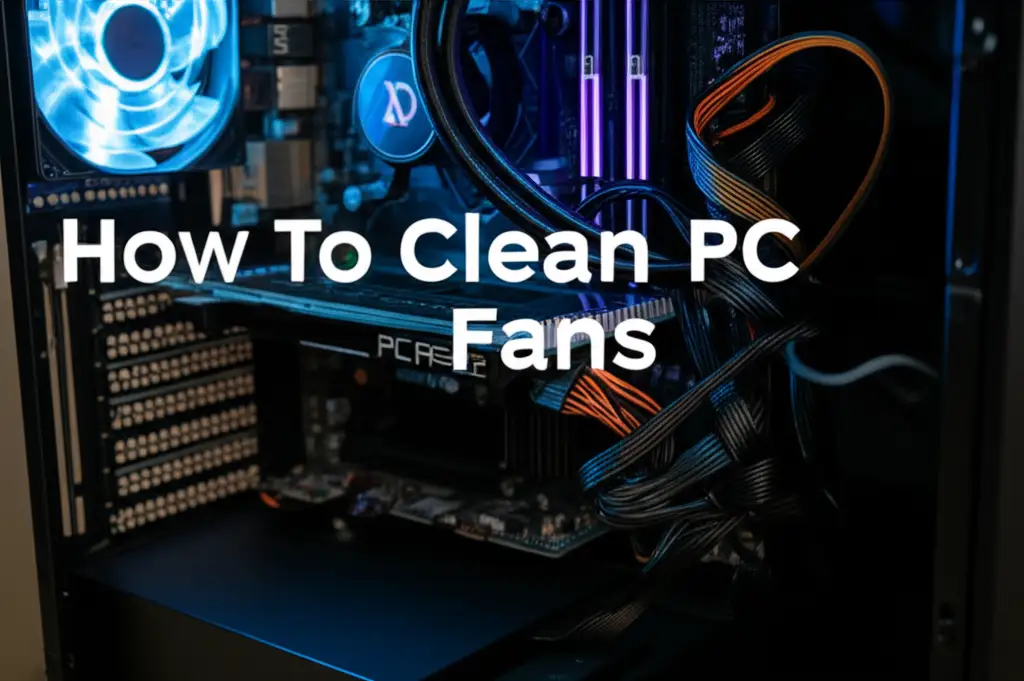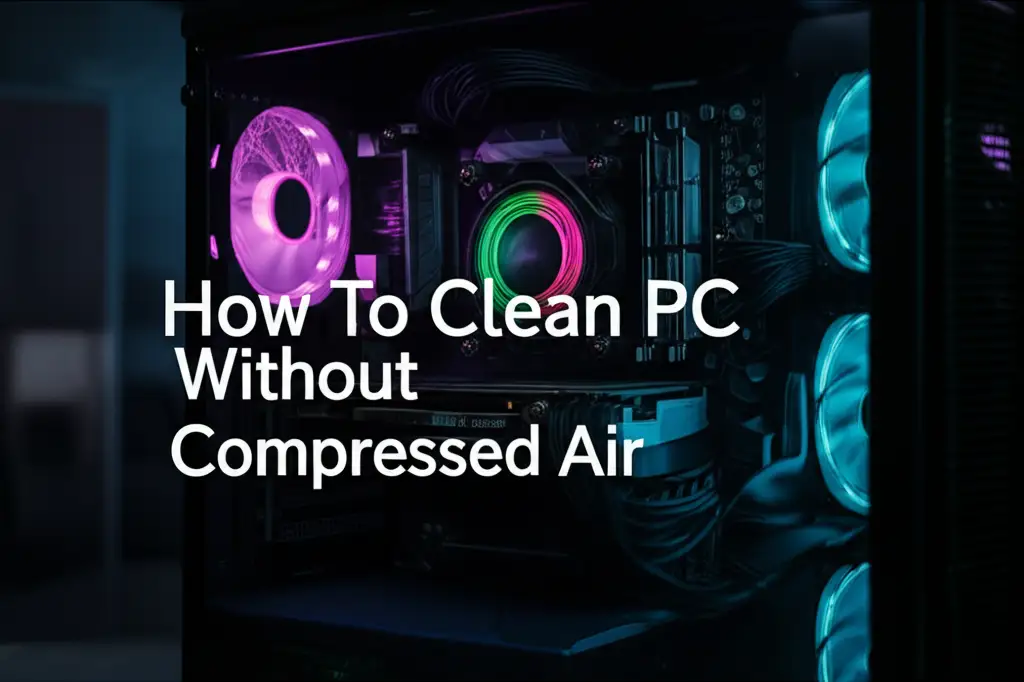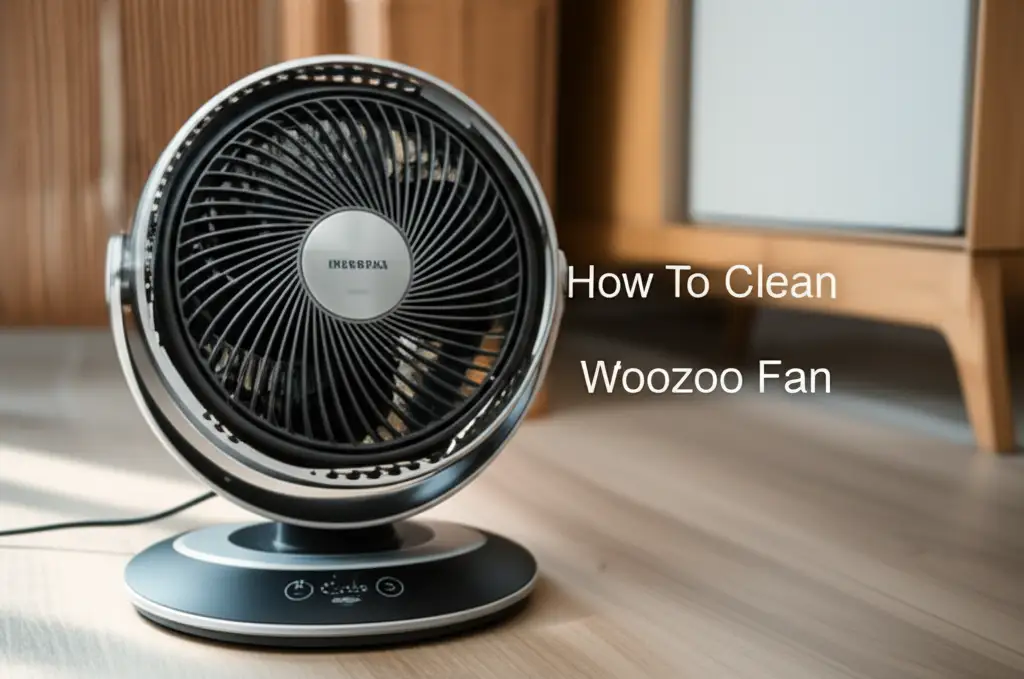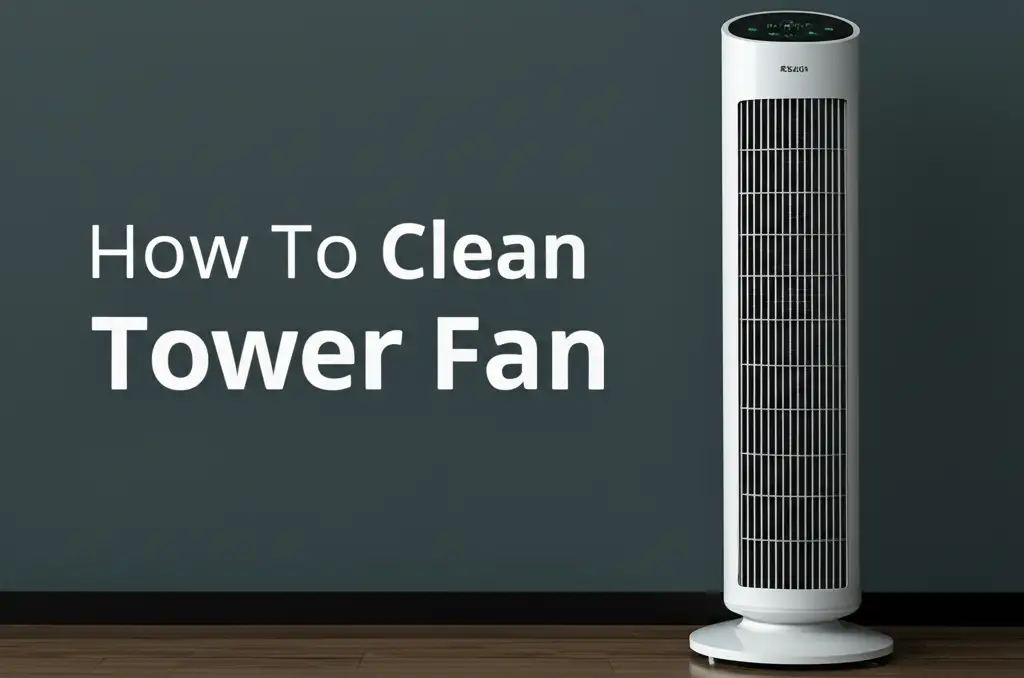· PC Maintenance · 14 min read
How To Clean Pc Fans

How to Clean PC Fans: Your Guide to Cooler Computing
Is your computer making more noise than usual? Does it feel warm to the touch? These are common signs that your PC fans need attention. Dust and debris build up inside your computer, blocking airflow. This reduces cooling efficiency. Learning how to clean PC fans is a simple but vital maintenance task. It helps keep your computer running smoothly. This guide shows you steps for proper fan cleaning. We will cover necessary tools, safety precautions, and cleaning methods. This will help you restore your PC’s performance and extend its lifespan.
Takeaway
Cleaning your PC fans is important for computer health. Follow these key steps for effective fan cleaning:
- Gather the right tools: compressed air, microfiber cloths, screwdrivers.
- Always unplug your PC and discharge static electricity for safety.
- Methodically clean case fans, CPU fans, and GPU fans.
- Clean dust filters regularly to prevent future buildup.
- Establish a cleaning schedule based on your environment.
Answer to the Main Query
To clean PC fans, first power down and unplug your computer. Open the case. Use compressed air to blow dust away from fan blades and heatsinks. Hold fan blades still to prevent overspinning. Finish by wiping away loosened dust with a microfiber cloth.
Why PC Fan Cleaning Matters: Better Performance
Your computer generates heat. Components like the CPU and GPU produce a lot of warmth during operation. PC fans move air through the case. This airflow cools these parts. Dust acts as an insulator. It traps heat inside your computer. When dust builds on fan blades and heatsinks, fans cannot move air effectively. This causes temperatures to rise.
High temperatures are bad for your PC. They can slow down your computer’s performance. Components might “throttle” or reduce their speed to prevent damage. This leads to frustrating lag. Over time, sustained high temperatures can even shorten the lifespan of your computer’s parts. Keeping your fans clean ensures proper cooling. It helps your computer run at its best. It also prevents costly hardware failures. A clean fan system means a quiet and efficient PC.
Cleaning the fans helps maintain optimal system temperatures. It prevents thermal throttling. It also extends the life of internal components. Dust accumulation is the primary enemy of PC cooling. Regular cleaning addresses this directly. This proactive approach saves money on potential repairs. It also ensures a smoother computing experience. Ignoring fan cleaning leads to preventable issues. You keep your computer healthy when you clean the fans.
Gathering Your Tools: Preparing for Cleaning
Before you start cleaning your PC fans, gather the right tools. Having everything ready makes the process smoother and safer. You do not need many specialized items. Most tools are easy to find.
Here is a list of essential tools:
- Compressed Air Can: This is your primary weapon against dust. It provides a strong, focused blast of air. This dislodges dust from hard-to-reach areas. Make sure to use compressed air designed for electronics.
- Microfiber Cloths: These soft cloths are lint-free. They are good for wiping away loose dust. They do not scratch surfaces.
- Phillips Head Screwdriver: You will need this to open your PC case. Some cases use thumbscrews, but a screwdriver is always good to have.
- Anti-static Wrist Strap: This is highly recommended. It prevents static electricity from damaging sensitive components. You wear it on your wrist and clip it to a metal part of your PC case.
- Small Brush or Cotton Swabs: These are useful for gently cleaning stubborn dust. They work well for small gaps and fan blades.
- Flashlight or Headlamp: This helps you see clearly inside the case. It illuminates dark corners where dust hides.
Avoid using a household vacuum cleaner. A vacuum cleaner generates static electricity. It also has strong suction. This combination can damage sensitive PC components. For alternative methods, you can learn how to clean PC without compressed air. Proper tools make the job safe and effective.
Safety First: Preparing Your PC for Fan Cleaning
Safety is the most important step before you touch any internal computer parts. Electricity and static discharge can damage your PC components. Taking proper precautions protects both you and your hardware. Do not rush this part of the process.
Follow these safety guidelines carefully:
- Power Down Your PC Completely: Do not just put it to sleep. Shut it down through the operating system. Make sure it is fully off.
- Unplug All Cables: Disconnect the power cable first. Then unplug all other cables. This includes monitor cables, USB devices, and Ethernet cables. This removes any power source from the system.
- Move to a Clean, Flat Surface: Work on a table or desk. Avoid carpeted floors. Carpets generate a lot of static electricity. A hard, clean surface is best.
- Discharge Static Electricity: This is crucial. Wear an anti-static wrist strap. Clip the strap’s alligator clip to an unpainted metal part of your PC case. This grounds you. It prevents static buildup from transferring to your sensitive components. If you do not have a wrist strap, touch an unpainted metal part of the PC chassis frequently. Do this before and during the cleaning process. This helps ground you.
- Allow Time to Cool: If your PC was just running, let it sit for a few minutes. This allows components to cool down.
Taking these steps ensures a safe cleaning environment. It minimizes the risk of damaging your expensive computer parts. A careful approach helps you clean your PC inside safely. Cleaning inside a PC requires attention to detail.
Step-by-Step Guide: Cleaning PC Case Fans
Cleaning your PC case fans is a straightforward process. These fans pull air into and push air out of your computer case. They often collect the most dust. Take your time with each fan.
Here is how to clean them:
- Open Your PC Case: Use your Phillips head screwdriver or thumbscrews. Remove the side panel of your PC case. Most cases have one or two panels that slide off or swing open.
- Locate Case Fans: Look for large fans attached to the front, back, top, or bottom of your case. These are your case fans.
- Identify Dust Buildup: Observe how much dust has collected on the fan blades and surrounding grilles. Heavy dust indicates reduced airflow.
- Hold Fan Blades Still: This is very important. When using compressed air, hold each fan blade firmly with your finger. Do not let the fan spin freely. Spinning the fan too fast can damage the fan’s bearings. It can also generate a small electrical current. This current can harm the motherboard.
- Use Compressed Air: Aim short bursts of compressed air at the fan blades and surrounding areas. Work in a well-ventilated space. Dust will fly everywhere. Blow from one side of the fan through to the other.
- Wipe Away Remaining Dust: After using compressed air, some dust may remain. Use a microfiber cloth to gently wipe down the fan blades and frame. For stubborn spots, a cotton swab can help.
- Clean Dust Filters: Many PC cases have removable dust filters. These are usually located at intake fan positions (front, bottom). Carefully remove these filters. You can clean them by tapping them gently to dislodge dust. For very dusty filters, rinse them under water. Make sure they are completely dry before putting them back. Learn more about how to clean PC dust filters.
Repeat this process for all case fans. Ensure each fan is free of dust. This improves air circulation significantly.
Tackling the CPU and GPU Fans: Advanced Cleaning Steps
Beyond case fans, your CPU and GPU also have dedicated cooling systems. These are crucial components, and their fans require careful attention. The CPU (Central Processing Unit) and GPU (Graphics Processing Unit) generate a lot of heat. Their cooling solutions are often more complex.
Here is how to clean CPU and GPU fans:
Cleaning the CPU Fan and Heatsink
The CPU cooler typically has a fan mounted on top of a large metal heatsink. This heatsink has many fins. Dust gets trapped between these fins.
- Locate the CPU Cooler: It sits directly on your motherboard, usually near the center.
- Inspect for Dust: Look closely at the fan blades and the heatsink fins. You will likely see thick layers of dust trapped within the fins.
- Hold the Fan: Just like case fans, hold the CPU fan blades still. Prevent them from spinning when you apply air.
- Apply Compressed Air: Use short, controlled bursts of compressed air. Direct the air into the heatsink fins. Work from different angles to dislodge all dust. Dust can be stubborn here. You might need to blow from several directions.
- Use a Brush (Optional): For very stubborn dust, a soft brush or a small, clean paintbrush can help. Gently brush dust out from between the heatsink fins. Follow up with compressed air.
- Wipe Down: Use a microfiber cloth to wipe any dust that settles on the fan housing or surrounding components.
Cleaning the GPU Fans
Graphics cards (GPUs) often have one, two, or even three fans. These fans cool the GPU chip and its heatsink.
- Locate the Graphics Card: It is a large card plugged into a slot on your motherboard.
- Inspect GPU Fans: Look at the fans on the GPU itself. Dust collects on the fan blades and within the shroud.
- Hold Fans Still: Again, hold each GPU fan blade. Prevent it from spinning freely while cleaning.
- Use Compressed Air: Direct short bursts of compressed air at the GPU fans and heatsink. Blow air through the cooling fins. Ensure dust exits the card.
- Wipe Down: Use a microfiber cloth to clean the surface of the GPU shroud and fan blades.
Be gentle when cleaning these components. They are more delicate than case fans. Take your time to ensure all dust is removed for optimal cooling performance.
Cleaning Dust Filters and Radiators: Complementary Maintenance
While cleaning your PC fans, it is wise to address other dust-collecting parts. Dust filters and radiators play a big role in keeping your system clean and cool. They complement the work of your fans. Cleaning them ensures your efforts on the fans are not wasted.
Cleaning Dust Filters
Most modern PC cases come with removable dust filters. These filters are located at the intake points. They stop dust from entering your PC. They are usually found at the front, top, or bottom of the case.
- Remove Filters: Gently slide out or unclip the dust filters from their slots. They are designed for easy removal.
- Shake Out Dust: Take the filters outside or over a trash can. Tap them gently to shake off loose dust. You might be surprised by how much collects.
- Rinse (Optional): If filters are very dirty or clogged, you can rinse them under cool tap water. Use a soft brush if needed. Do not use soap or harsh chemicals.
- Dry Completely: This step is crucial. Let the filters air dry completely before reinserting them. This can take a few hours. Moisture inside your PC can cause severe damage.
- Reinstall Filters: Once dry, place the filters back into their designated slots in the PC case.
Regularly cleaning these filters prevents dust from reaching your fans in the first place. This makes fan cleaning less frequent. Learn more about how to clean PC dust filters.
Cleaning Radiators (for Liquid Cooling)
If your PC uses a liquid cooling system (AIO cooler or custom loop), it will have a radiator. Radiators use fins to dissipate heat from the liquid. Fans are usually mounted directly to them.
- Locate Radiator: Radiators look like car radiators. They are usually installed at the front, top, or back of the case. Fans attach to them.
- Clean Fins: Dust collects between the radiator fins. Use compressed air to blow dust through the fins. Blow in the direction of airflow (usually from the side where the fans are).
- Hold Fans: If fans are still attached, hold them still while cleaning.
- Wipe Down: Use a microfiber cloth to wipe the outside of the radiator.
These extra steps ensure maximum airflow and heat dissipation. They contribute greatly to your PC’s overall cooling efficiency.
When to Clean Your PC Fans: A Maintenance Schedule
Knowing when to clean your PC fans is as important as knowing how. The frequency depends on several factors. Your environment, PC usage, and even pet ownership play a role. Establishing a regular maintenance schedule keeps your computer healthy.
Factors Affecting Cleaning Frequency:
- Environment:
- Dusty Homes: If your home is particularly dusty, or near construction, you will need to clean more often.
- Pets: Pet hair is a major contributor to dust buildup. PCs in homes with pets require more frequent cleaning.
- Smoking: Smoke particles can stick to components and fans, creating a sticky residue. This attracts more dust.
- PC Usage:
- Heavy Gaming/Intensive Tasks: High-performance tasks generate more heat. This causes fans to work harder and pull in more air. This means more dust.
- Light Usage: A PC used only for basic browsing will accumulate less dust.
Recommended Cleaning Schedule:
- General Use (Average Home, No Pets):
- Every 3-6 months: A full internal cleaning, including fans and heatsinks.
- Monthly: Quick check of dust filters. Clean if necessary.
- Dusty Environment / Pets / Smoking:
- Every 1-3 months: A full internal cleaning. This is crucial for maintaining performance.
- Bi-weekly / Monthly: Check and clean dust filters frequently.
- Before/After Peak Usage Seasons:
- Consider cleaning before summer. Warmer ambient temperatures make efficient cooling even more critical.
Signs Your PC Needs Cleaning Now:
- Increased Fan Noise: Fans spinning louder or constantly.
- High Temperatures: Software readings show CPU/GPU temps are high.
- Performance Slowdown: Your PC feels sluggish or “throttles” during tasks.
- Visible Dust: You can see dust accumulating through vents or on fan blades.
Do not wait for problems to arise. Proactive cleaning saves you trouble in the long run. Keeping your PC clean ensures its longevity and peak performance.
Conclusion
Cleaning your PC fans is a fundamental part of computer maintenance. It directly impacts your system’s performance and lifespan. Dust acts as an enemy, trapping heat and forcing components to work harder. By regularly cleaning your fans, you ensure optimal airflow. This keeps internal temperatures low. This prevents thermal throttling and extends the life of your valuable hardware.
We covered the essential steps. First, gather your tools, like compressed air and a microfiber cloth. Next, prioritize safety by powering down and grounding yourself. Then, systematically clean your case fans, CPU cooler, and GPU fans. Remember to hold the fan blades still during cleaning. Do not forget to clean dust filters and radiators for a truly comprehensive approach. Establish a routine for cleaning. This routine depends on your environment and usage.
A clean PC is a happy PC. It runs quieter and more efficiently. It also provides a better computing experience. Make PC fan cleaning a regular part of your tech care routine. This simple act saves you from potential performance issues and expensive repairs. Invest a little time now. Your computer will thank you with reliable, high performance for years to come. Take action today to keep your PC cool and responsive.
FAQ Section
Q1: How often should I clean my PC fans? A1: Clean your PC fans every 3 to 6 months for average use. If you live in a dusty environment, have pets, or use your PC for intense tasks, clean them every 1 to 3 months. Visible dust buildup or increased fan noise are clear signs it is time for a cleaning.
Q2: Can I clean PC fans without compressed air? A2: Yes, you can clean PC fans without compressed air. Use an electronic blower, a soft-bristled brush, or cotton swabs to dislodge dust. A microfiber cloth can wipe away the loosened debris. These methods effectively remove dust without harsh chemicals or static risks.
Q3: Is it safe to clean PC fans with water? A3: Do not use water directly on PC fans or any internal components. Water can cause short circuits and permanent damage. You can rinse removable dust filters with water, but ensure they are completely dry before reinserting them into your PC.
Q4: What happens if I don’t clean my PC fans? A4: If you do not clean your PC fans, dust accumulates. This blocks airflow. Your PC components will run hotter. This can lead to reduced performance, system instability, and a shorter lifespan for parts like the CPU and GPU. It also increases fan noise.
Q5: Can I use a vacuum cleaner to clean PC fans? A5: Do not use a household vacuum cleaner to clean PC fans. Vacuum cleaners generate static electricity. This static discharge can damage sensitive electronic components. They also have strong suction that could dislodge parts. Stick to compressed air or electronic blowers for safety.
- PC cleaning
- fan maintenance
- computer cooling
- dust removal
- hardware care




